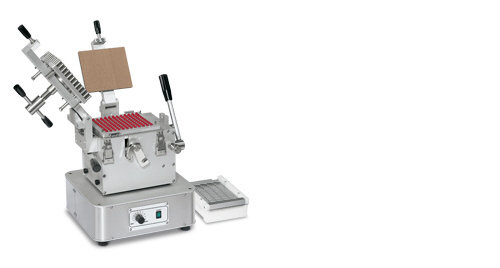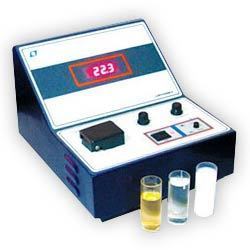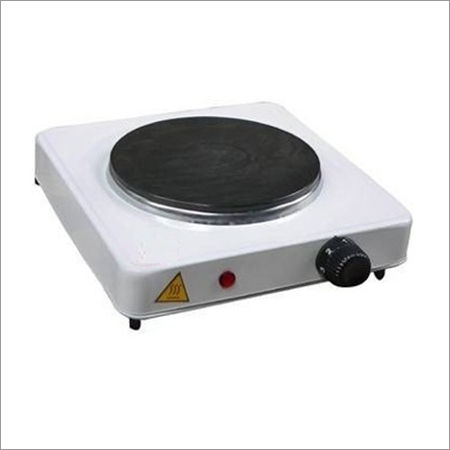Research Polirimeter
Price 32000 INR/ Unit
Research Polirimeter Specification
- Automation Grade
- Manual
- Measurement Range
- 180
- Feature
- High accuracy, easy manual operation, sturdy design
- Accuracy
- 0.01 degree
- Frequency
- 50 Hz
- Temperature Range
- Room temperature
- Voltage
- 220 V
- Capacity
- 1 ml to 5 ml sample volume
- Model No
- RPL-01
- Power Source
- Electric
- Core Components
- Magnifying eyepiece, sample tube, half-shade device
- Equipment Materials
- Stainless steel and optical glass
- Type
- Manual Research Polarimeter
- Usage
- Laboratory and research
- Display Type
- Analog scale with vernier
- Dimension (L*W*H)
- Approx. 420 x 150 x 220 mm
- Weight
- Approx. 10 kg
Research Polirimeter Trade Information
- Minimum Order Quantity
- 1 Piece
- Main Export Market(s)
- Australia, Eastern Europe, Middle East, Africa, Central America, South America, Western Europe, Asia, North America
About Research Polirimeter
Used in medical pharmaceutical and chemicals research laboratory consists of a imported half shade nicol polriser analyzer 100mm diameter circular scale divided in degrees 0 to 360x1 and a sugar scale divided-30 to + 130 x 1 iss, a divided micrometer drum is given to read 0.053 minutes and 0.1 is the scale is properly illuminated for taking readings the body is very sturdy and complete with polrimeter tube bubble traps at the center 200 mm. Sodium lamp with stand and transformer.
High-Precision Optical Measurements
Offering an optical rotation resolution of 0.01, the RPL-01 ensures highly accurate readings suitable for research and industrial quality control. Its sensitive vernier scale with rotation eyepiece facilitates fine adjustments, delivering dependable performance for diverse analytical tasks.
Durable Construction for Laboratory Demands
Engineered from polished stainless steel with a chemically resistant coating, the polarimeter is highly robust against corrosion, spills, and frequent handling. The dustproof housing further protects sensitive optical components, supporting consistent results even in busy lab environments.
Portable and User-Friendly Design
Weighing approximately 10 kg and featuring a compact form (420 x 150 x 220 mm), this manual polarimeter is easily transported between workstations. The analog display with magnifying eyepiece and half-shade device simplifies manual operation, making it accessible to users of varied experience.
FAQs of Research Polirimeter:
Q: How do I operate the Research Polarimeter RPL-01 for measuring optical rotation?
A: To operate the RPL-01, insert the sample tube (with a 15 ml solution) into the device, use the rotation scale and vernier through the eyepiece to align the half-shade device, and note the optical rotation from the analog scale. The devices manual controls and magnifying eyepiece ensure precise measurements.Q: What types of samples can be analyzed with this polarimeter?
A: The RPL-01 is designed to measure optical rotation in transparent liquid samples, such as sugars, essential oils, or organic solutions, commonly used in research and quality control laboratories. The standard 100 mm tube accommodates sample volumes from 1 to 5 ml.Q: When should the polarimeter be calibrated?
A: This model comes factory pre-calibrated to meet international laboratory standards. Routine recalibration is generally unnecessary unless stipulated by internal quality guidelines or after major service events, ensuring sustained accuracy over time.Q: Where can the Research Polarimeter be used effectively?
A: Ideal settings include research laboratories, educational institutions, quality assurance departments of manufacturing companies, and industrial labs particularly in the pharmaceutical, chemical, and food sectors. Its portability and robust build support flexible, on-site usage.Q: What benefits does the chemically resistant and dustproof design offer?
A: The chemically resistant finish and dustproof housing protect the sensitive optical and mechanical components from spills and particulates, ensuring long-term durability, reliability, and minimal maintenance in demanding laboratory environments.Q: How does the manual design enhance usage and maintenance?
A: The manual operation eliminates complex electronics, reducing downtime and simplifying user training. With an analog vernier scale, users retain direct control, and routine cleaning is straightforward, promoting consistent, trouble-free performance.

Price:
- 50
- 100
- 200
- 250
- 500
- 1000+
More Products in ANALYTICAL LAB INSTRUMENTS Category
Capsule Filling Machine
Price 31500 INR / Piece
Minimum Order Quantity : 1 Piece
Weight : Approx. 55 kg
Equipment Materials : Stainless Steel (SS 304/316)
Usage : Pharmaceutical Capsule Filling
Dimension (L*W*H) : 405 mm x 300 mm x 455 mm
KYMOGRAPH .
Price 14000 INR / Unit
Minimum Order Quantity : 1 Unit
Weight : 57 kg (approx)
Equipment Materials : Stainless Steel, Mild Steel, Plastic
Usage : Physiological Experiments, Laboratory Use
Dimension (L*W*H) : 350 x 200 x 250 mm
Turbidity Meters
Price 10700 INR / Piece
Minimum Order Quantity : 1 Piece
Weight : Approx. 0.7 kg
Equipment Materials : ABS Plastic Body
Usage : Water Sample Turbidity Analysis
Dimension (L*W*H) : 210 x 150 x 60 mm
Hot Plates
Price 2500 INR / Piece
Minimum Order Quantity : 1 Unit
Weight : Approx. 47 kg depending on size
Equipment Materials : Mild Steel Powder Coated Body, Cast Iron Heating Surface
Usage : Laboratory, Research
Dimension (L*W*H) : 300 mm x 250 mm x 150 mm (Standard size, custom on request)
 |
ESEL INTERNATIONAL
All Rights Reserved.(Terms of Use) Developed and Managed by Infocom Network Private Limited. |

 Send Inquiry
Send Inquiry




